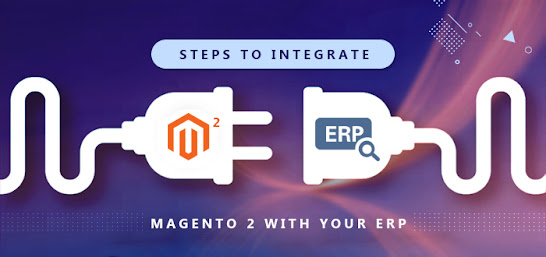Enterprise resource planning systems are developed to channelize the workflow in a business. It keeps things in a regularized way for every employee and maintains necessary transparency in between each other.
As far as eCommerce businesses are concerned, they need complete agility for day and night due to varying global time zones. ERP solutions here could play an important role by integrating them with your ecommerce software solutions.
Considering Magento 2 as your ecommerce business store, ERP integration would become essential for specific support requirements, and they are-
To channelize how the order management system works?
Processing of specific order through its information.
To manage POS/PIM into your Magento ecommerce store.
To experience the leisure of transforming the store into an automated version
We’ll get into the steps to integrate the ERP solution to your Magento ecommerce store with or without the help of an ERP solution provider, following them could get you a streamlined workflow and smoothly operating eCommerce business. Before them, let us see what different types of Magento-ERP integrations are possible-
P2P Integration
ERP’s involvement is basically needed at every point of exchange. Now, the term exchange not just includes money and the product, but it includes all those points where customers can receive or deliver something.
A point of sale is a point of exchange. A platform for feedback is a point of exchange. Similarly, ERP can be integrated with all those points to keep an eye over things that are either coming or going in order to enhance customer experience.
Custom Integration
Custom integration can be implemented using APIs and is the most flexible one of all, due to its freedom to integrate any part and keep an eye over it to improve it even better.
However, it is the most complex as well as expensive one.
Multichannel Integration
ERP in general is used to not let things go off the board and stay in line so that the workflow could stay consistent. Now, multichannel integration is said to integrate every portion of the business including raw material procurement store, inventory, production, manufacturing, order management, and delivery program system.
This could be over-budgeting for small and medium-sized enterprises, but it is equally essential for big players who have their own manufacturing as well as production units and run their ecommerce business depending on their deliverance.
Integration with Magento software solutions is easy because Magento is the only eCommerce platform that provides utmost customization and flexibility in development.
There are other ecommerce platforms as well that are usually compared with it like Magento vs BigCommerce vs Shopify. You may check on their customization degree and judge by yourself whether they are near Magento over integration abilities or not.
Steps To Integrate An ERP System With Your Magento Ecommerce Solution
Analyze the Workflow of your business
Prepare a checklist of your business deficiencies that needs to be addressed
Make sure whether the ERP system would fit your business needs or not
Find a responsive and experience Integration partner
Why is an Integration Partner Important?
Integration of the ERP system with your Magento solution isn’t a baby task. It would welcome some technical challenges, a proper checklist of functionalities that are desired to address the business needs, and some modifications as well as extension deployment.
All these tasks would ideally demand an inclusion of Magento development services. However, Magento 2 allows the user to integrate things and customize the store as per the desire just like a complete user-friendly CMS. But bringing an expert or integration service provider in between would save you time and ensure fool-proof integration.

No comments:
Post a Comment